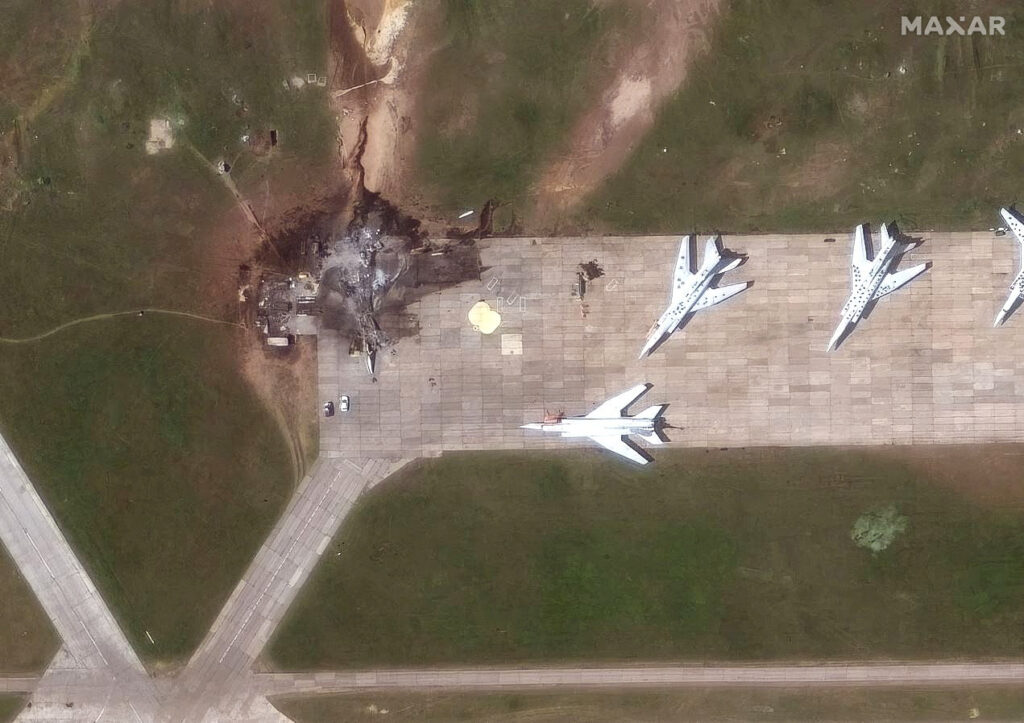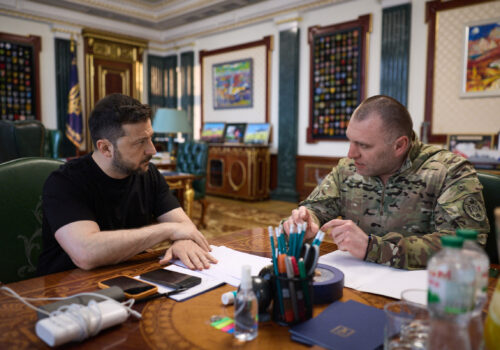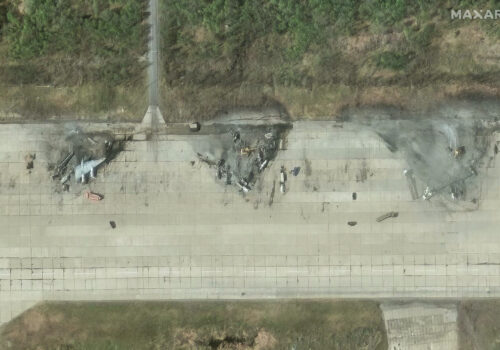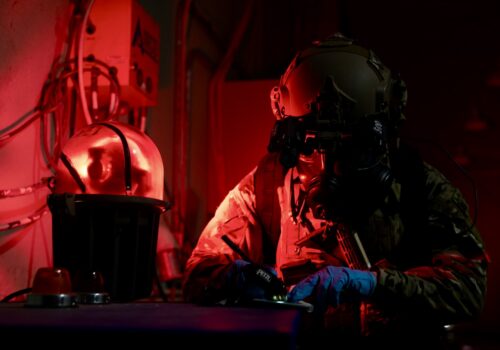In the days since Ukraine’s brazen special forces attack inside Russia, analysts have breathlessly argued that the operation, captured in spectacular detail in videos, significantly changed the character of military conflict—or even “rewrote the rules of war.”
Maybe so. There were plenty of novel elements to Ukraine’s “Operation Spiderweb,” which destroyed a dozen or more large Russian military aircraft—including bombers capable of carrying nuclear weapons—across the length and breadth of Russia, using drones launched from containers positioned near Russian airfields.
But in my field of nuclear deterrence, the attack was enlightening in another way: It reinforced principles that have been hiding in plain sight for years. For US nuclear strategists, the attack yielded at least four crucial lessons.
1. The risk of nuclear escalation over conventional attacks is exaggerated
Ukraine’s drone strikes were a blow to the widely held belief that nonnuclear military attacks on nuclear-relevant facilities or assets will lead automatically to uncontrollable nuclear escalation.
As I have argued previously, too many analysts of nuclear affairs appear to overweight the risk that if a nuclear-armed country is facing attacks on nuclear-relevant locations or assets by conventional weapon systems or dual-capable ones (systems relevant to both nuclear and conventional missions), then that country will feel overwhelming pressure to escalate to the use of nuclear weapons, perhaps even before assessing the extent of the attacks. This logic looks convincing. But it is empirically unsupported.
Russia may yet respond to the Ukrainian attack. But Russian nuclear retaliation in Ukraine seems unlikely, even after Russia lowered its stated threshold for nuclear use in September 2024. Ukrainian drone strikes on multiple Russian bomber bases would seem to be exactly the sort of attack that would trigger Russia’s lower threshold for resorting to nuclear weapons. Yet no such use has materialized.
To be clear, nuclear-armed states may well resort to nuclear use to coerce an end to military operations that could lead to unacceptable costs, such as the destruction of a large portion of that state’s nuclear arsenal. But last weekend’s operation is further evidence that attacks falling short of this threshold are not likely to trigger a major nuclear exchange.
2. Nuclear forces are only as dependable as their defenses
Ukraine’s attacks vividly illustrated the vulnerability of the US bomber fleet, which is often sitting on the tarmac. Drone threats are just one of a variety of air and missile threats to the US homeland, though certainly one that has received less attention in the strategic forces community. The 2023 Congressional Strategic Posture Commission Report and a recent Atlantic Council study on missile defense both concluded that the United States must enhance its air and missile defense. In particular, it must pay attention to countering coercive attacks on civilian and military infrastructure, as well as on US nuclear forces.
Reflecting on the Ukrainian attacks, General Thomas Bussiere, the commander of US Air Force Global Strike Command, said at an Atlantic Council event on June 5 that the Air Force already deploys counter-drone systems around strategic air bases. The strikes on Russia this past weekend underscore that these efforts should improve and expand, perhaps under the aegis of the Trump administration’s proposed “Golden Dome.” This active defense must be completed by improved sensing, better coordination among responsible agencies, and the advancement of passive measures, such as the use of hardened shelters in peacetime, as well as air alerts and backup airfields in conflict or crisis.
3. Drones should be factored into nuclear-capabilities planning
There’s another truism in nuclear affairs rendered all the truer by last weekend’s operation: Advanced and emerging technologies can powerfully complement nuclear weapons in holding an adversary’s strategic nuclear forces at risk.
This possibility is especially tantalizing as US nuclear strategists grapple with the fact that China’s nuclear-weapons arsenal is expected to reach near-parity with the US nuclear arsenal in the mid-2030s. Because holding at risk an adversary’s nuclear weapons is an important part of how the United States deters nuclear war, the growth in China’s nuclear arsenal puts pressure on the United States to increase the size of its own nuclear arsenal. Advanced conventional weapons might complement these forces or even reduce the extent to which the United States will need to expand its nuclear forces. Perhaps drones could play a part in that equation.
4. Special forces should be at the center of major power competition
As my Atlantic Council colleagues have argued in recent reports, US special operations forces, which have been occupied with counterterrorism and counterinsurgency in the Middle East for two decades, can play an important role in US competition with major powers such as Russia, marking a return to their Cold War-era roots. Ukraine’s attack on Russian bombers is best understood in the context of a long history of operations behind enemy lines to disrupt airfields.
Ukraine’s Operation Spiderweb was certainly daring and will reduce the capacity of Russia’s long-range aviation for some time. More than marking a new chapter in the history of warfare, however, the strikes should spur the US government to address the vulnerabilities and opportunities that nuclear strategists have focused on for years.
Mark J. Massa is the deputy director for strategic forces policy in the Forward Defense program of the Scowcroft Center for Strategy and Security at the Atlantic Council.
Further reading
Sun, Jun 1, 2025
Dispatch from Kyiv: Ukraine’s daring drone attack gives Trump leverage against Putin
New Atlanticist By John E. Herbst
Ukraine’s June 1 drone strikes against five bases across Russia underscored its ingenuity and may help shape the negotiations to come.
Thu, Jun 5, 2025
Ukraine just gave us a glimpse into the future of European defense
Inflection Points By Frederick Kempe
European allies need both military capabilities and technological innovation to deter Russia, as Ukraine’s recent drone strikes on Russian air bases underscore.
Tue, Nov 5, 2024
Nuclear weapons on the battlefield are a growing risk. US and allied militaries should prepare now.
New Atlanticist By
US military and defense thinkers must overcome two major misconceptions that for too long have shaped US actions regarding nuclear weapons.
Image: A satellite image shows a destroyed TU 22 aircraft in the aftermath of a drone strike at the Belaya air base, Irkutsk region, Russia, June 4, 2025, Maxar Technologies/Handout via Reuters.




